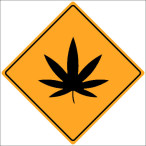Confusing, questionable and variable cannabis safety standards threaten medical, recreational marijuana programs.
As of 2015, four states in the US allow recreational and medical marijuana use, and another eight states allow medical marijuana for certain conditions. Many other states are watching, ready to follow. Projections vary, but the cannabis industry could reach between $21 billion and $35 billion by the year 2020.
Any way you look at it, marijuana is a growth industry. But despite the tremendous potential size of this business, the legal framework is woefully inadequate. The phrase “wild west days” has been used to indicate the state of confusion regarding the laws surrounding the legal cannabis industry.
A good example is the various states’ regulatory and testing standards for cannabis. The different frameworks for determining safety when using marijuana varies enormously. In some states, safety standards have been set by scientists. In others, politicians and bureaucrats with no scientific background set the standards.
For example, safety regulations require testing for heavy metals. The Massachusetts Department of Public Health has the strictest restrictions of lead allowances of any state, yet relatively lenient allowances for other dangerous heavy metals such as arsenic, cadmium and mercury.
Of course, high levels of lead or other heavy metals in marijuana would be dangerous and should never be allowed. But the Massachusetts standard – that levels in cannabis flowers must be less than 212 parts per billion – was originally based on an assumption that a typical patient will consume ten ounces a day – a ridiculous, almost impossible claim. Health officials later revised their assumptions to assume a level of one ounce per day, still a very unrealistic estimation. Other states’ standards are based on a more reasonable estimate of typical use, about five grams a day.
Lead is a naturally-occurring element, and can be found in trace amounts in water, many foods, and even wine. Chris Hudalla, the chief scientific officer at ProVerde Laboratories, one of two marijuana testing facilities in Massachusetts, says that some vegetables he bought at a local grocery store would fail to meet the requirements. “Potatoes that we tested had similar levels,” he said. “We found it in a celery sample as well.”
In determining safe levels for these substances in marijuana, both concentration and frequency must be factored in. “One of the confounding dilemmas in cannabis testing is defining what is a ‘dose’ for the purpose of determining acceptable exposure levels to heavy metals,” explains Dr. Cindy Orser, Chief Science Officer for DigiPath Inc. (otcqb:DIGPD). DigiPath recently opened their first cannabis testing lab in Las Vegas.
“While pesticide residues are defined as a permissible concentration [PPB] in the dried cannabis plant material, heavy metal exposure is defined by ‘how much’ or the concentration [PPB] multiplied by the frequency of use, and further multiplied by the duration of use!” she continues. “ And the only objectively knowable component of that equation is the concentration.” She concludes, “Clearly, we need to consider a more cohesive, nationally vetted accord on how to best arrive at a reasonable threshold for patient safety.”
One way around the overly-restrictive regulations is by selling so-called edibles, products cooked with marijuana oil, or chemically extracted cannabinoids. But sales of flower products in Massachusetts and other states may be stalled until safety standards can be corrected to reflect actual usage.
With the cannabis industry all but guaranteed to grow exponentially, it is imperative that nationwide standards governing testing and acceptable levels of environmental toxins be established. For both medical and recreational marijuana, safety regulations built on generous, but not absurd, assumed levels of use will protect patients and recreational users while still allowing access as legally permitted.
Regulation of marijuana needs to follow the examples of other food and environmental safety regulatory agencies. The U.S. Food and Drug Administration and the U.S. Department of Agriculture both set consistent, nationwide standards. Rules governing the cannabis industry should follow in the same path. Clear, fair and consistent rules regarding growth, quality control, testing and sales of marijuana (not to mention clearing up the banking problem) need to be established now. Without a national standard, dispensaries and growers are frustrated, waiting for approval and not even sure of what requirements they must meet.
The bottleneck caused by the lack of clear and consistent regulations has disastrous affects. Patients suffering from conditions eased by marijuana may find their access limited. Tax revenue, a big selling point for legalized marijuana, would certainly be affected if recreational users are turned away due to problems meeting unrealistic regulations.
A vision of clear, fair and consistent regulatory rules for the cannabis industry? Advocates are hoping that it’s not just a pipe dream.
